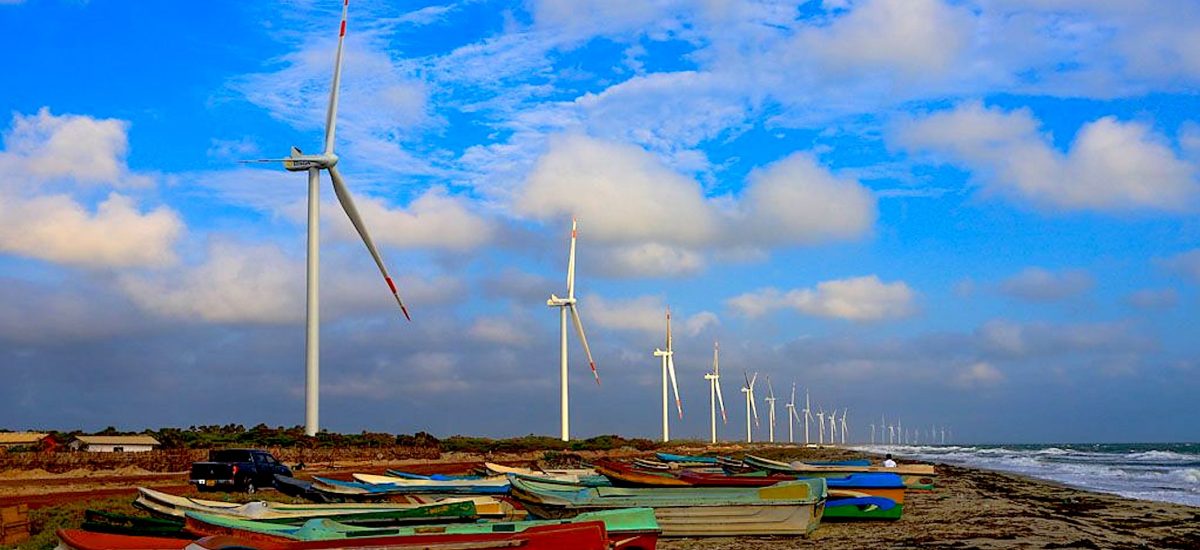Photo courtesy of ADB
On the quiet shores of Mannar Island, something powerful is unfolding – not just a protest but a collective cry for justice, dignity and the right to live in harmony with the land. In recent weeks, this coastal region has become the epicenter of rising tensions between local communities and Colombo based extractive interests seeking to exploit the island’s mineral rich sands.
What began as a covert land survey attempt has since erupted into a unified resistance, one that cuts across villages, faiths and generations.
Survey without consent
On the afternoon of May 19, a team linked to a private mineral company arrived unannounced in the Pesalai housing scheme to conduct a land survey. They brought drones and technical equipment but no legal permissions. No clearance had been granted by the Coast Conservation Department or the Department of Fisheries and Aquatic Resources. Nor had the Mannar Land Survey Department been consulted.
This top down approach ignoring local voices and legal procedures sparked outrage. Civil society groups, community organizations and residents intervened directly, confronting the team and demanding an immediate halt. The operation was suspended and the incident was reported to district authorities. Still, the damage was done: trust had been broken.
The survey was not an isolated act but part of a larger pattern of extractive initiatives creeping into the Northern and Eastern regions still healing from war, displacement and economic neglect.
The day Mannar roared
On June 11, over 2,000 people gathered on Mannar Island in a peaceful but resolute protest. Organized by a coalition of community groups and supported by environmental organizations, the rally represented a unified rejection of unchecked development. From fisherfolk and farmers to youth groups, women’s collectives and faith leaders, the message was clear: Stop the destruction of our home.
Their concerns went far beyond a single land survey. At stake is the very future of the island – its ecology, its culture and its people.
The mineral sand mining crisis
Mannar is a land of quiet beauty and ecological wonder. Its windswept sand dunes, mangroves, marine ecosystems and wetlands are not only breathtaking; they are lifelines. They support endangered species, protect against coastal erosion and sustain traditional livelihoods like fishing, salt farming and small scale agriculture.
But beneath these lands lie deposits of ilmenite, rutile and zircon, minerals coveted globally for their use in titanium and ceramics. Multinational and local companies see Mannar’s coast as a resource to be extracted, not a landscape to be protected.
Why this is a crisis
Environmental degradation
- Mining destroys coastal ecology, leading to rapid erosion and loss of marine biodiversity
- Mangroves, vital for storm protection and habitat preservation, are being cleared
- Sand extraction contaminates groundwater and destabilizes the natural sand balance, threatening farming and fisheries
Displacement of communities
- Proposed mining zones overlap with ancestral lands and traditional fishing areas
- Families risk losing their homes, incomes and access to food
- Forced migration becomes a looming threat for those already living in vulnerable conditions
Lack of transparency and consent
- Communities report zero meaningful consultation
- Environmental Impact Assessments (EIAs), if conducted, are inaccessible, never translated, never shared.
- Affected people are systematically excluded from decisions that will define their future
The windmill projects: Green energy or greenwashing?
In parallel, large scale wind turbine installations have begun dotting the Mannar landscape. Marketed as part of Sri Lanka’s push for renewable energy, these projects are raising new concerns.
- Bird migration disruption: Mannar lies along a critical migratory route. Turbines endanger avian species through collisions and habitat changes
- Noise and land conflict: Windmills placed near homes generate constant noise and alter land usage impacting the health and productivity of residents
- Ecosystem imbalance: Massive infrastructure projects in delicate ecosystems risk irreversible damage.
The irony is sharp: in the name of fighting climate change, the island’s most climate resilient ecosystems are being destroyed.
Why this land matters
Mannar is not just a piece of land; it is a living heritage. Generations have lived in balance with its coastal rhythms, harvesting salt, casting nets and protecting its mangroves. These natural resources are not infinite. Once lost, they are gone forever.
The true wealth of Mannar lies in its balance between human life and nature. What its people are demanding is not the end of development but the beginning of ethical, sustainable development that includes them.
The people’s demands
At the heart of the June 11 protest were calls that resonate across the island and beyond.
- Immediate suspension of all mineral mining and wind energy projects in their current forms
- Full disclosure and translation of environmental assessments
- Free, Prior, and Informed Consent (FPIC) from communities before project approval
- Legal protection of coastal ecosystems and traditional lands
A petition has been submitted to national leadership. The island waits for a response.
A nation at the crossroads
This is not just about Mannar. It is about the future direction of Sri Lanka’s development. Will we continue to pursue projects that profit the few while silencing the many or will we chart a new course, one rooted in transparency, justice and environmental stewardship?
The people of Mannar have drawn a line in the sand. They are not opposing progress; they are demanding that it be just, inclusive and sustainable.
Listen to the island
Mannar has spoken not in anger but with clarity, conviction and care for future generations. It is time for the nation to listen. Development without consent is not development. Extraction without protection is not progress. Silencing communities is not the path forward. This island is not just where we live – it is who we are. We will defend it.

